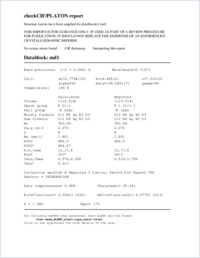Silver(I) complexes with 4,7-phenanthroline efficient in rescuing the zebrafish embryos of lethal Candida albicans infection
- Pavic, Aleksandar Institute of Molecular Genetics and Genetic Engineering, University of Belgrade, Serbia
- Savić, Nada D. University of Kragujevac, Faculty of Science, Department of Chemistry, Kragujevac, Serbia
- Glišić, Biljana Đ. University of Kragujevac, Faculty of Science, Department of Chemistry, Kragujevac, Serbia
- Crochet, Aurélien Department of Chemistry, University of Fribourg, Switzerland
- Vojnovic, Sandra Institute of Molecular Genetics and Genetic Engineering, University of Belgrade, Serbia
- Kurutos, Atanas Institute of Organic Chemistry with Centre of Phytochemistry, Bulgarian Academy of Sciences, Sofia, Bulgaria
- Stanković, Dalibor M. The Vinča Institute of Nuclear Sciences, Belgrade, Serbia
- Fromm, Katharina M. Department of Chemistry, University of Fribourg, Switzerland
- Nikodinovic-Runic, Jasmina Institute of Molecular Genetics and Genetic Engineering, University of Belgrade, Serbia
- Djuran, Miloš I. Serbian Academy of Sciences and Arts, Belgrade, Serbia
-
01.06.2019
Published in:
- Journal of Inorganic Biochemistry. - 2019, vol. 195, p. 149–163
English
Five novel silver(I) complexes with 4,7-phenanthroline (4,7-phen), [Ag(NO3-O)(4,7- phen-μ-N4,N7)]n (1), [Ag(ClO4-О)(4,7-phen-μ-N4,N7)]n (2), [Ag(CF3COO-O)(4,7- phen-μ-N4,N7)]n (3), [Ag2(H2O)0.58(4,7-phen)3](SbF6)2 (4) and {[Ag2(H2O)(4,7- phen-μ-N4,N7)2](BF4)2}n (5) were synthesized, structurally elucidated and biologically evaluated. These complexes showed selectivity towards Candida spp. in comparison to the tested bacteria and effectively inhibited the growth of four different Candida species, particularly of C. albicans strains, with minimal inhibitory concentrations (MICs) in the range of 2.0–10.0 μM. In order to evaluate the therapeutic potential of 1–5, in vivo toxicity studies were conducted in the zebrafish model. Based on the favorable therapeutic profiles, complexes 1, 3 and 5 were selected for the evaluation of their antifungal efficacy in vivo using the zebrafish model of lethal disseminated candidiasis. Complexes 1 and 3 efficiently controlled and prevented fungal filamentation even at sub-MIC doses, while drastically increased the survival of the infected embryos. Moreover, at the MIC doses, both complexes totally prevented C. albicans filamentation and rescued almost all infected fish of the fatal infection outcome. On the other side, complex 5, which demonstrated the highest antifungal activity in vitro, affected the neutrophils occurrence of the infected host, failed to inhibit the C. albicans cells filamentation and showed a poor potential to cure candidal infection, highlighting the importance of the in vivo activity evaluation early in the therapeutic design and development process. The mechanism of action of the investigated silver(I) complexes was related to the induction of reactive oxygen species (ROS) response in C. albicans, with DNA being one of the possible target biomolecules.
- Faculty
- Faculté des sciences et de médecine
- Department
- Département de Chimie
- Language
-
- English
- Classification
- Chemistry
- License
-
License undefined
- Identifiers
-
- RERO DOC 326739
- DOI 10.1016/j.jinorgbio.2019.03.017
- Persistent URL
- https://folia.unifr.ch/unifr/documents/307991
Other files
Statistics
Document views: 123
File downloads:
- pdf: 275
- Supplementary material: 150
- Supplementary material: 372


